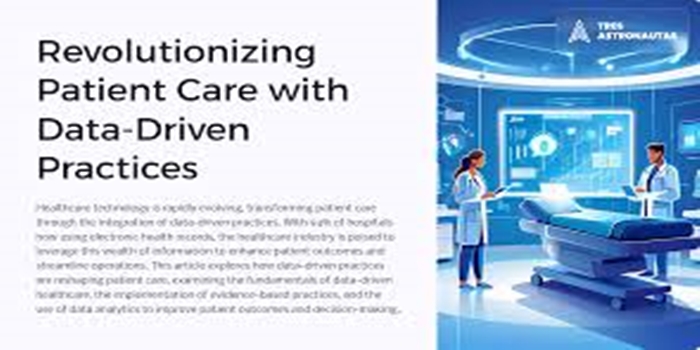Introduction
Teaching patients to navigate a tech-driven healthcare system involves equipping them with the knowledge and skills to effectively use digital tools and platforms for managing their health. This includes understanding electronic health records (EHRs), telehealth services, and remote monitoring devices, as well as promoting patient engagement and self-efficacy in their healthcare journey.
The Rise of Tech-Driven Healthcare:
Diagnostics and Treatment:
AI and Machine Learning:
AI algorithms can analyze vast amounts of patient data to improve diagnostic accuracy, predict disease outbreaks, and personalize treatment plans.
Robotics:
Surgical robots enhance precision and minimally invasive procedures, while robots can also assist with tasks like patient lifting and companionship, especially for the elderly and those with chronic illnesses.
Remote Monitoring:
Wearable devices and remote monitoring systems allow patients to track their health metrics (like heart rate, sleep patterns, and blood sugar) and share data with healthcare providers, enabling proactive interventions and personalized care.
- Access and Efficiency:
Telemedicine:
Telemedicine platforms facilitate remote consultations, reducing the need for in-person visits, particularly beneficial for patients in remote or underserved areas.
Electronic Health Records (EHRs):
EHRs streamline patient data management, improving information access and care coordination among healthcare providers.
Mobile Health (mHealth):
Mobile apps and platforms offer convenient access to health information, appointment scheduling, medication reminders, and even virtual therapy.
- Patient Engagement and Empowerment:
Personalized Medicine:
Genomics and personalized medicine, powered by technology, allow for tailored treatments based on individual genetic makeup.
Patient Portals:
Secure online portals give patients access to their medical records, test results, and the ability to communicate with their healthcare providers, fostering greater engagement and informed decision-making.
Digital Therapeutics:
Apps and digital tools can be used to deliver therapeutic interventions, such as behavioral therapy, for various health conditions.
- Challenges and Considerations:
Data Security and Privacy:
Protecting sensitive patient data in digital systems is paramount.
Digital Divide:
Ensuring equitable access to technology and digital literacy is crucial to prevent exacerbating health disparities.
Integration and Interoperability:
Seamless integration of different technologies and systems is necessary for effective care delivery.
Cost and Affordability:
The cost of implementing and maintaining new technologies can be a barrier for some healthcare organizations and patients.
Workforce Training:
Healthcare professionals need to be trained on how to effectively utilize and integrate new technologies into their practice.
Challenges Patients Face:
- Access to Care:
Financial Barriers:
High healthcare costs, including insurance premiums, deductibles, and co-pays, can prevent patients from seeking necessary medical attention. This is a major concern, with a significant number of Americans reporting they would be unable to afford care if needed.
Geographic Barriers:
Patients in rural areas may face limited access to specialists and treatment centers, requiring long travel times and potentially impacting their ability to attend appointments.
Appointment Availability:
Finding timely appointments with preferred providers can be difficult, leading to delays in diagnosis and treatment.
Transportation Issues:
Lack of reliable transportation, especially for those with mobility limitations or in underserved areas, can hinder access to healthcare facilities.
Insurance Coverage:
Navigating complex insurance plans and understanding coverage limitations can be challenging, potentially leading to surprise medical bills.
- Patient Experience:
Communication Barriers:
Miscommunication between patients and healthcare providers can lead to misunderstandings, medication errors, and reduced adherence to treatment plans. This can stem from language barriers, cognitive impairments, or simply a lack of clear and effective communication strategies from the provider.
Lack of Patient Engagement:
Low patient engagement can result in missed appointments, poor adherence to treatment plans, and reduced self-management of health conditions.
Negative Patient Experience:
Unpleasant interactions with staff, long wait times, and inadequate facilities can create a negative impression and discourage patients from seeking future care.
Emotional Distress:
Facing a serious diagnosis, managing chronic illnesses, or experiencing pain and discomfort can lead to significant emotional distress, including anxiety, depression, and fear.
- Patient Safety:
Medical Errors: Medication errors, surgical errors, and infections acquired in healthcare settings can cause serious harm to patients.
Falls and Pressure Ulcers: These are common adverse events that can result in avoidable patient harm.
Misdiagnosis: Incorrect diagnoses can lead to inappropriate or delayed treatment, potentially worsening a patient’s condition.
- Systemic Challenges:
Staffing Shortages:
Shortages of nurses, doctors, and other healthcare professionals can lead to longer wait times, increased workload for staff, and potential compromises in patient care.
Rising Healthcare Costs:
The increasing cost of healthcare services puts a strain on both patients and healthcare systems, leading to difficult choices and potential rationing of care.
Lack of Coordination:
Fragmented care, where patients move between different settings and providers without proper coordination, can lead to confusion, errors, and increased costs.
Burnout:
Burnout among healthcare professionals can negatively impact patient care, leading to decreased empathy, increased errors, and higher rates of staff turnover.
Health Equity:
Disparities in access to and quality of care persist across different demographic groups, impacting morbidity, mortality, and overall well-being.
- Specific Challenges:
Mental Health Support:
There’s a significant gap in providing adequate mental health services for patients facing chronic illnesses or other challenges.
Nutritional Deficiencies:
Nutritional deficiencies can contribute to various health issues and behavioral problems.
Addiction:
Patients with addictions may face challenges adhering to treatment plans due to their addiction.
Personality Disorders:
Patients with personality disorders may present with behaviors that make it difficult for healthcare providers to offer care.
Conclusion
As healthcare becomes increasingly digital, the ability of patients to navigate tech-driven systems is a determinant of access, quality, and equity. Empowering patients through targeted education, human-centered design, and community collaboration ensures that technology becomes a bridge, not a barrier to better health.
READ: Cloud Computing in Healthcare

